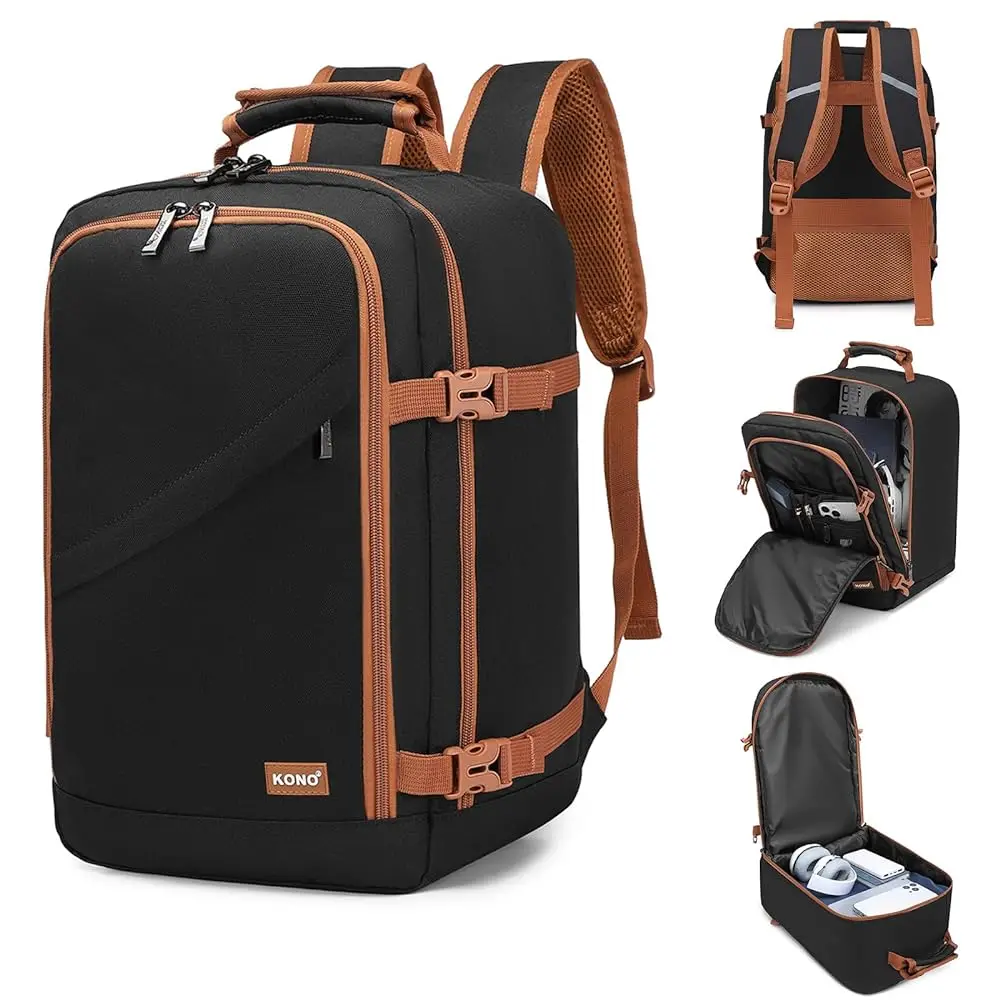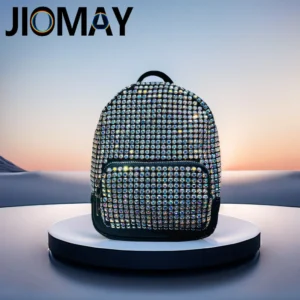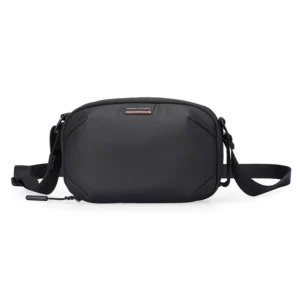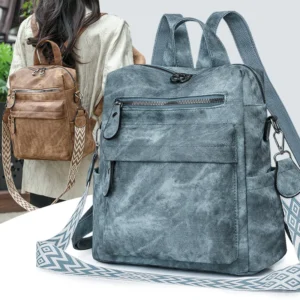Introduction: The Freedom and Benefits of Packing Light
Picture this: you’re rushing through a crowded train station, sweating profusely while dragging an oversized suitcase up a flight of stairs. Meanwhile, the traveler next to you glides effortlessly with just a small backpack, free to navigate without the burden of excess luggage. This stark contrast highlights one of travel’s most valuable skills: the art of packing light.
Traveling with just a small backpack offers transformative benefits that extend far beyond convenience:
- Enhanced mobility – move quickly through airports, narrow streets, and public transportation
- Physical comfort – avoid back pain and fatigue from heavy loads
- Financial savings – skip baggage fees and taxi fares for large luggage
- Simplified travel – no waiting at baggage claim or worrying about lost luggage
- Mental freedom – fewer possessions means fewer things to worry about
The good news is that minimalist packing isn’t an innate talent but rather a learnable skill. With the right approach, anyone can master the techniques to maximize space and minimize weight without sacrificing necessities.
Throughout this guide, we’ll explore practical strategies developed through extensive experience with minimalist travel. Whether you’re preparing for a weekend getaway or a month-long adventure, these principles will transform how you pack and, ultimately, how you travel. The freedom of exploring stylish mini backpacks for city travel opens up new possibilities for comfortable, stress-free adventures.
Selecting the Ideal Small Backpack for Minimalist Travel
Before focusing on what goes inside your pack, it’s essential to choose the right container. For minimalist travel, a “small backpack” typically refers to one with 20-40 liter capacity—enough for essentials without encouraging overpacking.
When selecting your perfect travel companion, prioritize these key features:
- Materials: Look for lightweight yet durable fabrics like ballistic nylon or ripstop materials that withstand travel abuse without adding unnecessary weight
- Organization: Seek clamshell-opening designs that allow full visibility of contents, with strategic pocket placement for easy access to essentials
- Comfort: Ensure proper back panel padding and adjustable straps appropriate for the weight you’ll carry
- Compression capability: Select bags with external straps to cinch down partially-filled packs, reducing bulk
- Weather resistance: Consider water-resistant materials or included rain covers for unpredictable conditions
The shape and design of your backpack significantly impact packing efficiency. Rectangular designs generally maximize usable space compared to tapered or irregularly shaped bags. For frequent travelers, investing in quality is worthwhile—a well-designed backpack can last for years of adventures.
While many travelers immediately gravitate toward larger bags “just in case,” experienced light packers know that leather mini backpacks for urban travel often provide sufficient space when packed strategically. The shape of your pack matters as much as its volume—choosing the right mini backpack shape ensures your essentials fit perfectly while maintaining a comfortable carry.
For those ready to embrace minimalist travel, our small leather backpack collection offers durable options designed specifically for efficient packing and all-day comfort.
Essential Mindset Shifts for Minimalist Packing
Successful light packing begins not with techniques but with mindset. The core principle—“less is always more”—might seem counterintuitive until you experience the paradoxical freedom that comes from carrying fewer possessions.
First, challenge the “just in case” mentality that leads to overpacking. Instead of packing for every possible scenario, pack for the most likely situations. Ask yourself: “What’s the actual likelihood I’ll need this item?” and “Could I purchase it at my destination if absolutely necessary?”
The “Lay It All Out” method provides a powerful visual editing technique:
1. Place everything you think you need on your bed
2. Remove one-third of those items immediately
3. Critically evaluate what remains, focusing on versatility
4. Pack only what passes this ruthless editing process
Prioritize multi-functional items over single-purpose ones. A simple scarf can serve as a wrap for cool evenings, a picnic blanket, a beach cover-up, or even emergency hand towel. This versatility principle dramatically reduces what you need to carry.
Rather than packing fresh clothes for each day, embrace practical washing strategies. Quick-drying fabrics can be hand-washed in a sink and will often dry overnight, allowing you to pack for just one week regardless of trip duration.
Researching your destination helps make smarter packing decisions. Understanding local weather patterns, cultural expectations, and availability of supplies lets you eliminate items you won’t need or can easily acquire on arrival.
Finally, set realistic expectations about comfort versus convenience. Light packing might mean wearing the same outfit more frequently or having slightly fewer toiletries, but the freedom gained makes these minor adjustments worthwhile. Learning how to pack a backpack evenly ensures comfort regardless of what you bring.
Building a Versatile Travel Wardrobe
Creating a functional travel wardrobe relies on the capsule concept: a limited collection of garments in complementary colors that can be mixed and matched to create numerous outfits. Choose a cohesive color palette—typically neutrals with one or two accent colors—to maximize combination possibilities.
Strategic fabric selection makes a dramatic difference in packability and practicality:
- Quick-drying properties: Synthetic blends and technical fabrics dry rapidly after washing
- Wrinkle resistance: Fabrics like merino wool, certain polyester blends, and modern performance textiles resist creasing
- Odor resistance: Natural fibers like merino wool can be worn multiple days without developing odors
- Weight and packability: Thin, lightweight materials that compress easily save valuable space
- Durability: Quality fabrics withstand repeated wearing and washing during travel
The layering system offers maximum adaptability with minimum bulk. Include:
– Base layers that wick moisture and feel comfortable against skin
– Mid layers for insulation and warmth
– Outer layers for wind and rain protection
Here’s a sample clothing quantity guide for a one-week trip with laundry capability:
| Item | Quantity | Notes |
|---|---|---|
| Underwear | 3-4 pairs | Quick-drying fabrics |
| Socks | 2-3 pairs | Choose appropriate for your activities |
| T-shirts/tops | 3-4 | Mix of short/long sleeve based on climate |
| Pants/bottoms | 2 | One for wearing, one packable |
| Mid-layer | 1 | Lightweight fleece or wool layer |
| Outer layer | 1 | Weather-appropriate protection |
| Sleepwear | 1 | Can double as workout clothes |
For special activities or environments, consider convertible options (like pants that zip off into shorts) or items that serve multiple purposes (like a dress that works for both day sightseeing and evening dining). Our collection of mini leather backpacks provides stylish options compact enough to accommodate your minimalist wardrobe without sacrificing style.
Advanced Packing Techniques for Maximum Space Efficiency
Mastering packing techniques can significantly reduce the volume your items occupy while keeping them accessible and wrinkle-free.
Rolling vs. Folding vs. Bundle Wrapping
Each packing method has specific advantages:
– Rolling works best for casual, wrinkle-resistant items like t-shirts, underwear, and jeans. This technique saves space and makes items visible at a glance.
– Traditional folding remains ideal for structured garments like button-down shirts, blazers, and dress pants that might develop odd creases when rolled.
– Bundle wrapping involves wrapping clothes around a central core, dramatically reducing wrinkles for formal wear. Though time-consuming, it’s unmatched for keeping dressy clothes presentable.
Strategic Use of Packing Organizers
The right organizers enhance efficiency without adding unnecessary weight:
– Compression packing cubes squeeze air from clothing, reducing volume by up to 30%
– Ultralight stuff sacks group similar items while protecting from moisture
– Reusable silicone or ziplock bags contain liquids and protect electronics
Load Distribution for Comfort and Balance
How you arrange items affects comfort as much as what you pack:
1. Place heavier items (electronics, shoes) closer to your back and centered in the pack
2. Position medium-weight items around the heavy core
3. Fill outer areas with lightweight, bulky items like clothing
4. Utilize “dead space” by stuffing socks inside shoes or filling hat crowns with small items
This strategic approach creates a stable, balanced pack that feels lighter because the weight sits properly against your body.
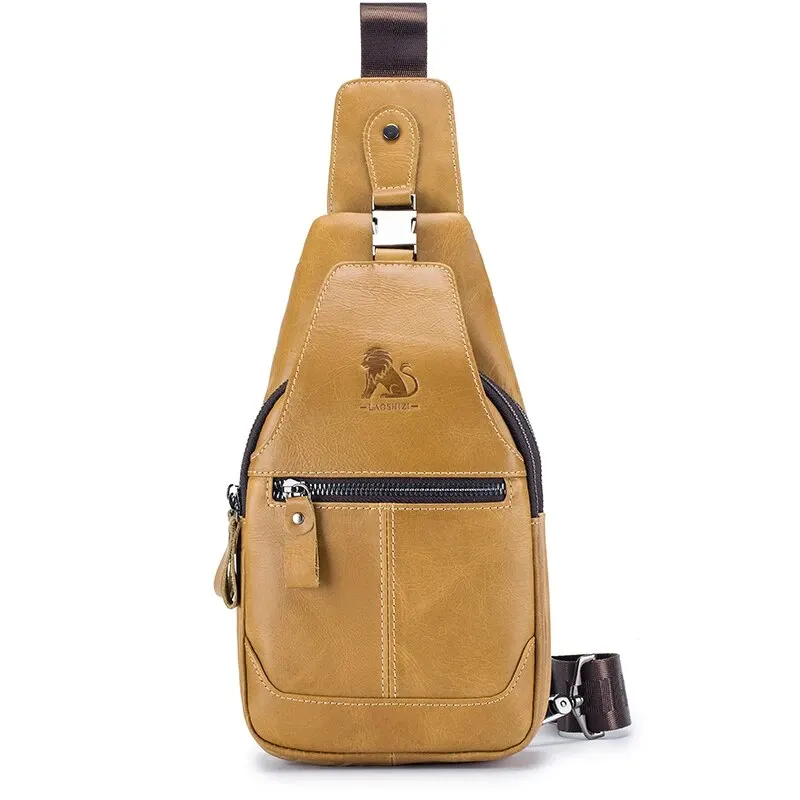
For those new to minimalist travel, understanding the principles of mastering small leather backpack organization can revolutionize your packing approach. Additionally, proper optimal backpack weight distribution ensures comfortable carrying even during long travel days.
Minimalist Toiletries and Personal Care Solutions
Toiletries often consume disproportionate space in travel bags despite being among the heaviest and bulkiest items. For air travelers, the TSA 3-1-1 rule (liquids in 3.4oz/100ml containers, all fitting in one quart-sized bag) already forces some minimization, but you can go further.
When deciding between purchasing travel sizes versus decanting from home supplies, consider:
– Travel sizes are convenient but often expensive per ounce
– Decanting into reusable travel containers creates less waste and saves money long-term
– For trips under two weeks, consider how little you actually need (a dime-sized amount of shampoo per wash adds up to very little total volume)
Solid alternatives eliminate liquid concerns entirely:
– Shampoo and conditioner bars last for months of regular use
– Solid deodorant sticks or crystals work effectively without liquids
– Toothpaste tablets or powder provide weeks of brushing in tiny containers
Multi-purpose products dramatically reduce what you need to carry:
– Castile soap can serve as body wash, shampoo, and even laundry soap
– Simple moisturizers can handle face, body, and hands
– Coconut oil works as moisturizer, makeup remover, and hair treatment
For medications and first aid, create a minimal kit based on your specific needs rather than packing for every possible scenario. Include only medications you take regularly plus basic essentials like pain relievers, bandages, and any destination-specific necessities.
For makeup and hair products, challenge yourself to identify your true essentials versus nice-to-haves. Multi-purpose cosmetics (like tints that work for lips and cheeks) and travel-sized styling tools save significant space in your carry-on leather backpack.
Streamlining Electronics and Essential Documents
In our connected world, electronics often constitute a significant portion of luggage weight. Begin by critically assessing which devices are truly necessary for your specific trip.
Digital solutions can replace numerous physical items:
– Smartphones serve as cameras, e-readers, maps, guidebooks, and communication devices
– E-readers hold thousands of books in a device thinner than a magazine
– Scanned copies of travel documents stored securely online eliminate paper bulk
Optimize your power solutions:
– Choose a single universal adapter with multiple USB ports instead of separate chargers
– Select an appropriately-sized power bank based on your actual usage patterns
– Use short cables with multiple connector tips rather than carrying several full-length cables
For essential physical documents:
– Use a slim, RFID-blocking document organizer for passport and critical identification
– Carry digital copies as backups stored in cloud services
– Leave unnecessary cards and excess cash at home
Consider these ultralight alternatives to common travel items:
– Microfiber or quick-dry towels instead of traditional cotton towels
– Collapsible water bottles that flatten when empty
– Minimal security solutions like luggage cable locks instead of bulky locks
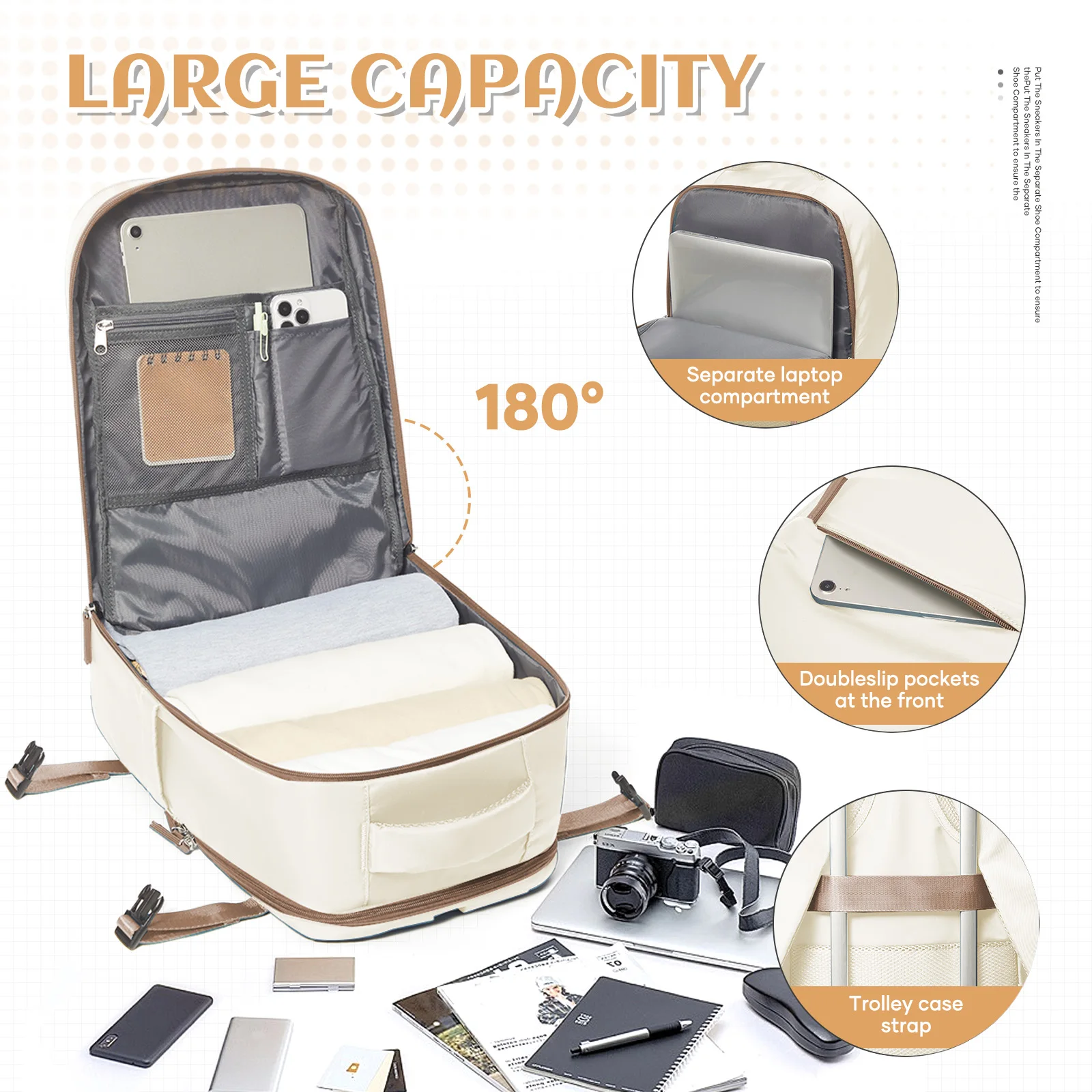
For day excursions from your accommodation, small leather sling backpacks offer perfect capacity for essential electronics and documents without unnecessary bulk.
Pre-Departure Preparation and Test Packing
The final weeks before departure present crucial opportunities to refine your packing strategy. Create a customized packing checklist based on your specific trip requirements, considering:
– Climate and seasonal conditions
– Planned activities and their specific requirements
– Cultural considerations at your destination
– Access to laundry facilities
Conduct a test packing session several days before departure:
1. Pack everything on your list into your chosen backpack
2. Assess weight distribution and overall comfort when wearing
3. Note which items are difficult to access and rearrange as needed
4. Identify items that could be eliminated or substituted
Weigh your packed bag to avoid airline surprises, especially if flying budget carriers with strict limitations. If you’re approaching weight limits, identify your heaviest items and consider wearing them during transit instead of packing them.
During your final assessment, ruthlessly question each item with:
– “Have I used this on previous trips, or has it just taken up space?”
– “What’s the worst outcome if I don’t bring this?”
– “Could I purchase this at my destination if absolutely necessary?”
– “Does this item serve multiple purposes?”
These preparations ensure your pack remains as light as possible while containing everything necessary. For more detailed guidance, our article on how to pack a leather carry-on backpack provides specific techniques for maximizing space in premium travel bags.
Solutions for Common Light Packing Challenges
Even committed minimalist packers face specific challenges. Here are practical solutions for common dilemmas:
Footwear Limitations
Shoes occupy enormous space relative to other items. Limit yourself to two pairs maximum:
– Wear your bulkiest shoes during transit
– Choose one versatile pair that works for multiple activities
– Consider packable options like lightweight trail runners that serve as walking and hiking shoes
Cold Weather Strategies
Cold destinations don’t necessarily require bulky clothing:
– Use the layering principle with thin thermal base layers
– Choose a packable down jacket that compresses to the size of a water bottle
– Select merino wool items that provide warmth without bulk
– Wear your heaviest layers during transit
Special Event Accommodation
For formal occasions:
– Select wrinkle-resistant fabrics for dressier attire
– Choose versatile pieces like a simple black dress or slacks that can be dressed up with accessories
– Consider renting formal attire at your destination for one-time events
Souvenirs and Shopping
Plan ahead for acquisitions:
– Pack a lightweight foldable bag for extra purchases
– Ship items home rather than carrying them
– Choose flat, lightweight souvenirs (postcards, fabric items) over bulky ones
– Consider consumable souvenirs (local foods) that won’t take up space long-term
Managing Wrinkles Without Tools
– Hang wrinkled clothes in the bathroom while showering—steam often removes minor wrinkles
– Bring a small spray bottle to lightly dampen and then stretch wrinkled items
– Choose naturally wrinkle-resistant fabrics from the start
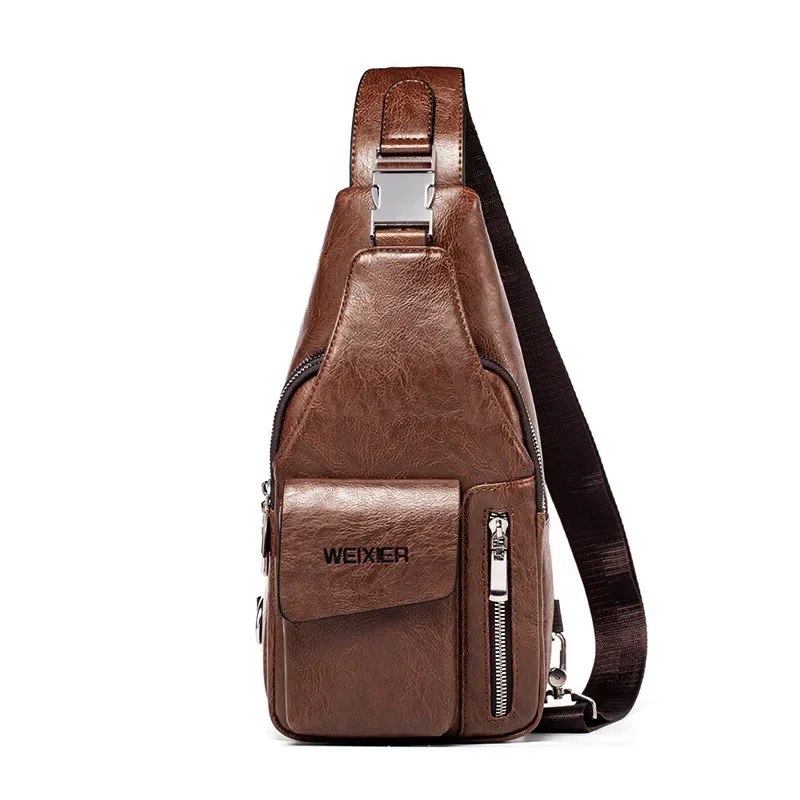
For travelers focused on urban exploration, our guide to small leather backpacks for city trips offers specific recommendations tailored to metropolitan adventures. Our vintage leather backpack collection combines timeless style with practical organization for minimalist travelers.
14 Inch Leather Laptop Backpack, Brown Leather Backpack, Men's Leather Backpack, Vintage Leather Backpack
Price range: $177.28 through $199.12 Select options This product has multiple variants. The options may be chosen on the product pageCarry On Leather Backpack, Roll Top Leather Backpack
Price range: $77.76 through $96.48 Select options This product has multiple variants. The options may be chosen on the product pageDesigner Mini Backpack, Mini Leather Backpack, Small Leather Sling Backpack, Women's Leather Backpack
Price range: $95.76 through $98.80 Select options This product has multiple variants. The options may be chosen on the product pageDesigner Mini Backpack, Designer Women's Backpack, Mini Leather Backpack, Women's Leather Backpack
Price range: $135.92 through $137.64 Select options This product has multiple variants. The options may be chosen on the product pageBlack Leather Sling Backpack, Crossbody Leather Sling Backpack, Small Leather Sling Backpack
Price range: $103.88 through $104.08 Select options This product has multiple variants. The options may be chosen on the product pageBlack Leather Backpack, Small Leather Backpack, Women's Leather Backpack
Price range: $112.96 through $116.12 Select options This product has multiple variants. The options may be chosen on the product page
The Evolution of a Light Packer: Practice and Refinement
Becoming a skilled minimalist packer doesn’t happen overnight. Like any worthwhile skill, it evolves through practice, reflection, and continuous refinement. Each trip becomes an opportunity to further hone your approach.
After returning home, take time to reflect on what worked and what didn’t:
– Which items did you use regularly?
– What remained untouched at the bottom of your pack?
– Which items served multiple purposes effectively?
– What did you miss that would have been worth carrying?
This post-trip assessment provides valuable data for improving your next packing experience. Many travelers find they can progressively reduce their load with each journey as confidence in minimalist techniques grows.
Remember that personal preferences matter tremendously in packing decisions. Some travelers prioritize clothing options while others focus on technology or comfort items. Your perfect packing strategy should reflect your unique travel style rather than following someone else’s formula exactly.
Beyond the practical advantages, many light packers discover unexpected psychological benefits. Traveling with less creates mental space and freedom that transforms the travel experience itself. The simplicity of carrying just what you need—nothing more, nothing less—often leads to more present, mindful exploration.
Consider experimenting with progressively smaller bags as your skills improve. What once seemed impossible—traveling for weeks with just a mini leather backpack—might become your preferred way to see the world.
The ultimate freedom in travel comes not from bringing everything you might want, but from needing very little to find joy in the journey.

